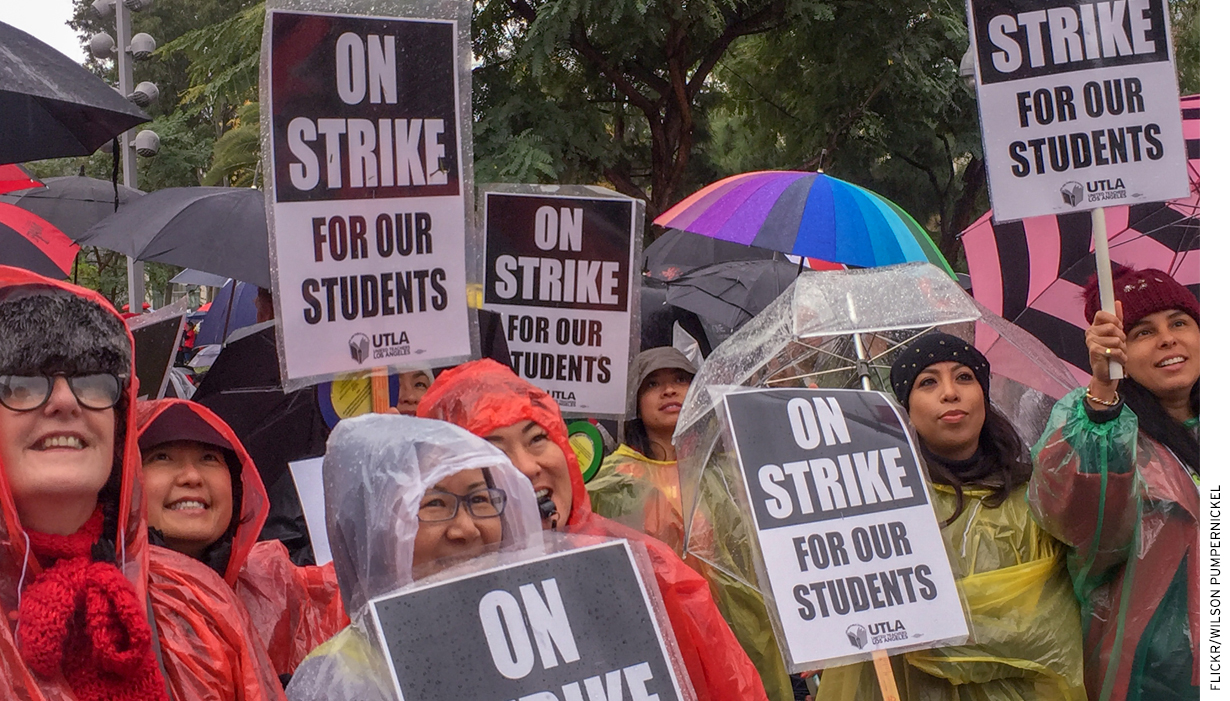
The Los Angeles teacher strike ended Tuesday with a deal for a 6 percent pay raise and a gradual decrease in class sizes. So, happy news for the teachers, and for the families who are happy to see schools back to normal. But, rather than leaving it there, it’s worth examining what is and isn’t resolved by the deal.
First off, whether LA’s teachers really are underpaid is ultimately a matter of opinion, but there are a few underreported facts worth bearing in mind. As I noted in Forbes last week:
In the Los Angeles Unified School District (LAUSD), according to the California Department of Education, average pay is $74,789. Indeed, California teachers rank second nationally in teacher pay, at $79,128 a year (the National Education Association reports that average pay, across the U.S., is $59,660). For those who would point to California’s sky-high cost of living, it’s worth noting that California’s median household income in 2017 was $71,805—which means the typical LA teacher earns more than the median California household.
Second, it’s also the case that LA school spending has increased substantially in recent years, even if that money hasn’t shown up in teacher paychecks. For instance, Stanford University lecturer David Crane has noted that LAUSD revenues rose 24 percent between fiscal 2013-14 and 2017-18, even as “spending on LAUSD teacher salaries rose only 5 percent” and the number of teachers declined by 13 percent.
So, why were LA teachers moved to strike? After all, despite this sizable spending increase, United Teachers Los Angeles (UTLA) accused superintendent Austin Beutner of “intentionally starving [LA] schools” of funding in order to make them “more vulnerable to takeover attempts by corporate interests.” If LAUSD is spending 24 percent more and district enrollment is slowly declining, how come teachers are so angry—and why aren’t they seeing bigger salaries or smaller classes?
Well, as Stanford’s Crane has observed, the culprit is skyrocketing retirement costs. In 2013-14, 10 percent of district operating expenses went to pensions and other retirement costs—while 36 percent went to teacher salaries. This means teacher compensation accounted for 46 percent of LAUSD’s operating expenses.
Four years later, amidst a 24 percent boost in district revenues, teacher salaries grew just 5 percent—while retirement expenses jumped by 84 percent. Teacher compensation—in total—remained relatively constant as a share of growing LAUSD outlays, but retirement costs were consuming a growing share of the dollars that might otherwise pay for salary bumps or new hires.
Has per pupil spending in LA been too low? Perhaps. In the most recent numbers, the California Department of Education reported that LAUSD spent $13,452 per student. That seems like a decent chunk of cash to me, but I’m open to the argument for more funding—especially if there’s reason to believe it’ll be spent wisely and well.
But the LAUSD-UTLA deal ignores the growing bite that retirement costs and underfunded pensions are taking out of the dollars earmarked for students and practicing teachers. As my colleague Nat Malkus has projected, by 2021, LAUSD benefit spending will consume up to a third of the district’s funds—and that total will be up to half of all funds by 2031. After all, as Bellwether Education’s Chad Aldeman has noted, every California teacher could see an immediate boost in pay of $10,250 per year, if it weren’t for the state’s massive pension debt.
A big part of this is health care costs. Dealing with some of that requires painful choices, but there are also pieces that are more easily addressed. Stanford’s Crane observes, “One-third of LAUSD’s retirement spending is for unnecessary, duplicative or excessive health insurance subsidies provided to retirees entitled to Medicare or ACA coverage. Terminating those subsidies could provide an immediate $10,000 salary increase for LAUSD teachers.”
Yet, despite the ugly math, there are no indications that the LA deal does anything but kick the can on these profound challenges.
In other words, with sufficient will and skill, there are opportunities to do better by today’s teachers without harming retirees. LA’s new deal represents a missed opportunity to do exactly that. Other districts should seek a more far-sighted, promising course. After all, as I argued last fall:
Policymakers should be on the side of teachers, but standing with teachers can’t mean betraying the trust of students, families, or taxpayers. If today’s policymakers are willing to tackle administrative bloat and anachronistic compensation systems, it’s possible to boost teacher pay by 20 percent, pay terrific teachers six figures, leave class sizes stable, and do it with a measured, disciplined increase in revenue.
Of course, finding the way to that kind of sustainable deal requires foresight and fortitude, on the part of both policymakers and teachers. From early reports, LA appears to have come up short.
— Frederick Hess
Frederick Hess is director of education policy studies at AEI and an executive editor at Education Next.
This post originally appeared on Rick Hess Straight Up.


